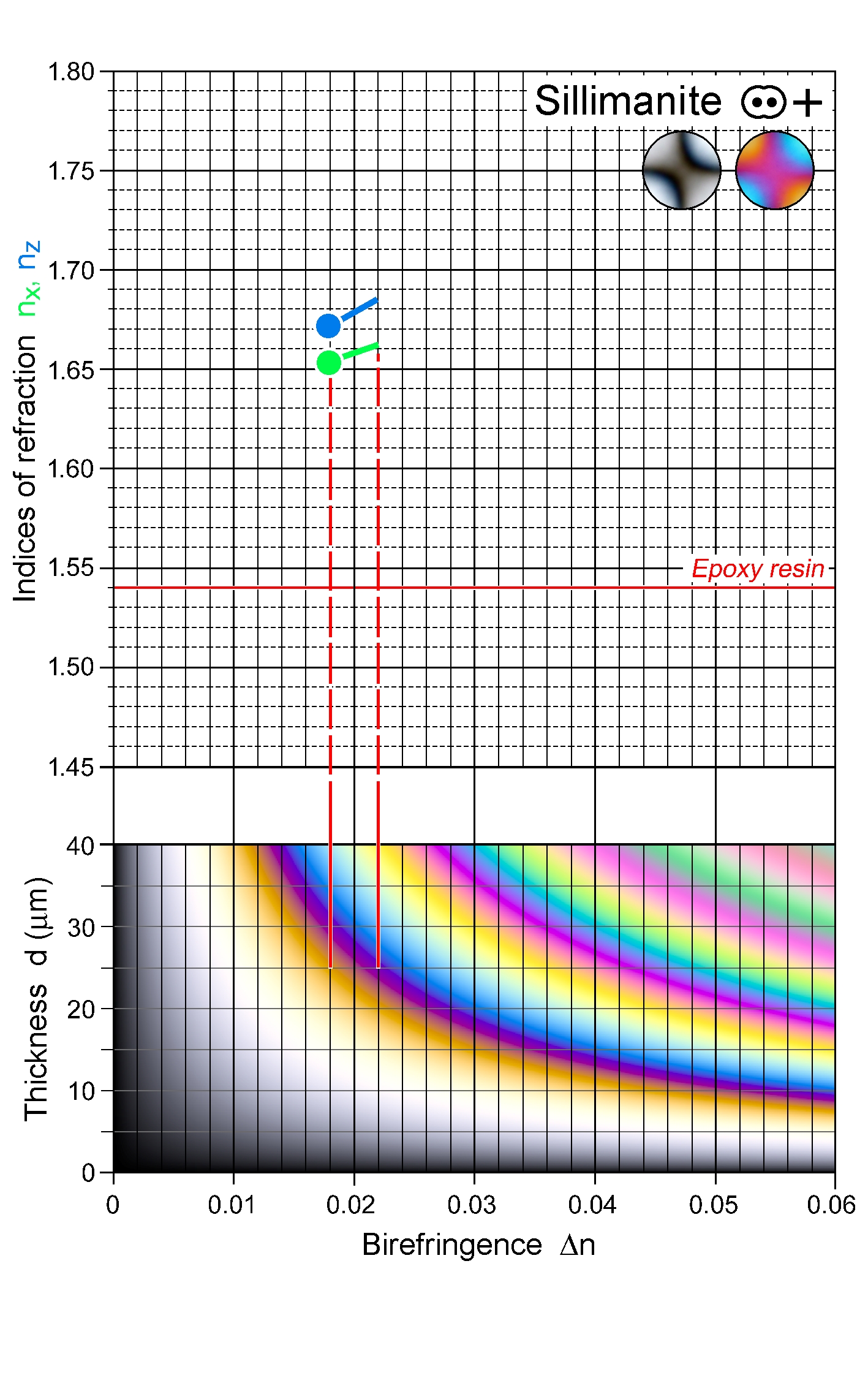|
| Formula | Al2SiO5 |
| | Optic class & sign | Biaxial positive |
| | Optical orientation | a = X, b = Y, c = Z |
| | Optical plane | (010) |
| | Relief | Moderate to high |
| | Refractive indices | nx = 1.653 -1.661
|
|
ny = 1.657 -1.662
|
|
nz = 1.672 -1.683
|
|
| |
| | Birefringence (max.) | 0.018 - 0.022 |
| | | |
| | Optic Angle
| 2Vx
|
| | 2Vz
= 21 - 30° |
| | Sign of elongation | Length-slow, l (+) |
| | Interference figure | Only sufficiently large crystals yield good interference figures on sections orthogonal or near-orthogonal to c. |
| | Colour / pleochroism | Colourless |
| | Zoning | |
|
|
| Form | Habit | Long-prismatic crystals, or felt-like aggregates of intergrown fibres ("fibrolite"); sections orthogonal or near-orthogonal to c show characteristic square- to diamond-shaped outlines |
| | | Surface | Typically euhedral to subhedral, except in high-grade reaction textures where irregular forms may occur |
| | Cleavage | {010} perfect; more commonly observed in sections ⊥ c than sections (sub-)parallel to c |
| | Twinning | None |
| | Extinction | Straight to prism faces |
|
|
| Reaction textures | Replacement of andalusite by sillimanite is a typical prograde feature in low-pressure, high-temperature metamorphic rocks. Retrograde transformation of sillimanite to andalusite is less common. |
| | Alteration / decomposition | Sericite, kaolinite, pyrophyllite |
|
|
| Occurence | Ign | Rare in granites or pegmatites |
| | | Met | Al-rich pelitic rocks in contact- and regional-metamorphic environments; metamorphosed aluminous weathering products such a bauxites; metapelite-derived residual rocks from anatectic environments; sillimanite characterises low-pressure, high-temperature metamorphism under amphibolite- to granulite-facies conditions |
| | | Sed | Detrital in sands |
| | | Hyd | May occur in quartz veins |
| | | Other | |
|
|
| Distinctive properties | Form, relief, lower second-order interference colours, straight extinction, sign of elongation, mineral association |
| | Additional comments | As fibrolite crystals are commonly much thinner than standard thin section thickness, second-order interference colours can only be observed where the fibrous aggregates show parallel crystal orientation such that cumulative retardation occurs across the crystal bundle |
|
|

 Images
Images 


 Images
Images 
